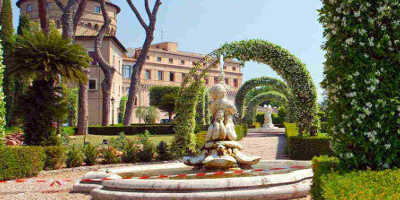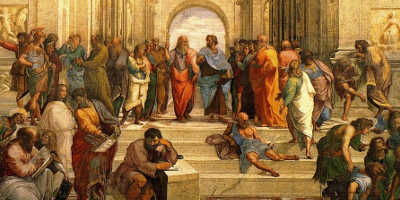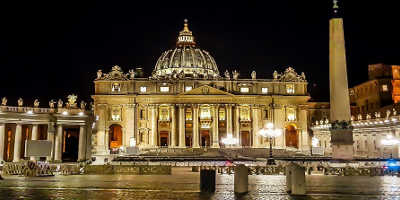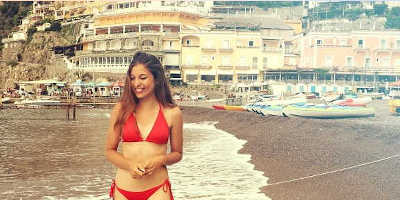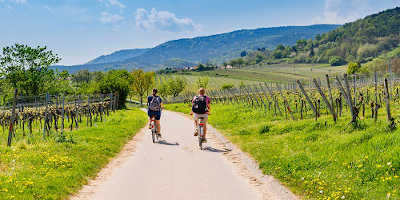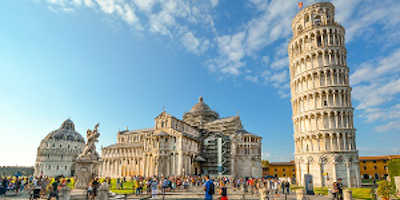Artists of the Vatican City
Not only the home of the Catholic Church but an enclave of religious masterpieces. Find out all there is know about the greatest artists of the Vatican!
Throughout its rich history, the walls of the Vatican City have been lavishly decorated with artwork from master painters, sculptors and architects. The Renaissance era saw the beginning of the golden age for Italy, with many of the Popes wanting to rebuild the Eternal city of Rome back to that of its glory days. This meant that an influx of artists, sculptors and architects were ripe in predominant cities like Rome and Florence, creating masterful works that would live on to shape the cities we know and love. These prized possessions demonstrate the level of artistic skill that was around during the Renaissance period. The Vatican holds many of these artworks, making the city an absolute feast for the eyes. Whilst you could go pretty much anywhere in the city and stumble across art and be impressed, there are a few pieces that stand out above the rest thanks to their incomparable style. So, who were the masters behind these iconic works?
-
Michelangelo
Michelangelo Buonarroti was born in 1475, Florence, and was considered one of the greatest Renaissance artists of his time, being the first of his kind to have a biography written about him while he was still alive. A man of many talents, Michelangelo was a sculptor, painter, architect and poet, however he considered sculpting, predominately with marble, to be his main line of work. He is known for arguably the greatest marble sculpture in the world; the statue of David, sculpted by Michelangelo at the age of 26. He was immensely proud of his piece at the time, and who can blame him?
He is also well-renown for his meticulous and inspiring frescoes located at the Sistine Chapel in the Vatican City. Whilst initially Michelangelo balked at the idea, he soon came around under the influence and encouragement of Pope Sixtus IV. He spent 4 years of his life perfecting his technique, leaving the painting of God until the very last so that he could portray him without error. His frescoes in the Sistine Chapel remain extremely reverent as it is the room in which all new Popes are elected by the conclave. Today, over 5 million people annually visit the Sistine Chapel to marvel at his impeccable work which continues to leave tourists awestruck.
-
Raphael
The frescoes of the Raphael Rooms are some of the most visited rooms in the Vatican. Painted by Raphael in 1508 under the patronage of Pope Julius II, these frescoes are amongst the most recognised of his works, found in a series of 4 rooms in the Apostolic Palace. Born in 1483 in Urbino to a wealthy merchant family, Raphael lived a short life until 37 years of age. This was still enough time for him to largely contribute to the Renaissance period. When Raphael moves to Florence, the living heart and soul of the Renaissance period, he encounters two of his rivals Michelangelo and Leonardo da Vinci, the three we know now to be masters of that period.
His last and most iconic painting; ‘Transfiguration’ was supposed to be sent to France, however, after his untimely death, it was kept by a cardinal in Rome. It can be seen today in the Vatican Museums, also notably the final stop of the grand funeral procession of the artist after his death. The procession was one of the largest of its kind as Raphael was a popular and likeable figure during his life. At the time of death, his workspace was a warehouse of sorts, with over 50 apprentices under his tutelage there.
-
Caravaggio
Born on the feast day of Archangel Michael, Caravaggio was born Michelangelo Merisi in 1571. By the age of 5 years old, the bubonic plague had begun its rampage around Europe, taking most of his family when he was just 11 years old. This may be in part the reason why the artist was so hot-headed, gaining a reputation for a fiery temper. His interest in violent and bloody biblical scenes led to many of his paintings being dramatic and realistic. The Beheading of St. John the Baptist for example, is a prime example of his raw and tension-filled work. He was known to work quickly, sometimes finishing paintings in just 2 weeks, and rarely did preliminary drawings, meaning he went straight to using canvas. His greatest work; The Deposition is housed in the Pinacoteca of the Vatican and depicts the moment in which Jesus is laid on the Anointing Stone.
Although not the first to use chiaroscuro, he was a prominent figure in bringing this style of painting to the surface, having mastered the skills of juxtaposing dark and light. At the height of his success, he kills a man in a violent brawl and becomes a fugitive, heading to Malta where he again gets into a dispute, this time at the Conventual Church of St. John. After this incident he is continuously on the run, going from place to place before he finally secures a Papal pardon and attempts to journey back to Rome. He dies soon later but his memory is resurrected in the 50’s by an exhibition portraying his work that thrusts him back into the limelight. His baroque style of painting and realism is remembered today as well as his audacious and intense use of chiaroscuro.
-
Bernini
A master of the Baroque style, Giovanni Lorenzo Bernini was born in Naples in 1598 and was influenced early on by antique Greek and Roman statues found in the Vatican. He adopted his passion for the arts by his father who was a Mannerist sculptor of some notability. He was the lead sculptor of his time, and notably sculpted many of the statues in the Borghese Gallery. During his youth, he was pinned to be the next Michelangelo of his generation, and this proved to be true. Many of Rome’s churches, fountains and piazzas are the work of Bernini.
A devout Roman Catholic, he was encouraged by Pope Urban VIII to study architecture, going on to design the throne of St. Peter as well as St. Peter’s Basilica itself. Over time, he became the leading architect of the Vatican and served 8 Popes during his lifetime. He is remembered as the father of the Baroque movement for his pioneering dramatic sculptures that paved the way for other artists in the movement after him.
Related article: Who was Gian Lorenzo Bernini?

